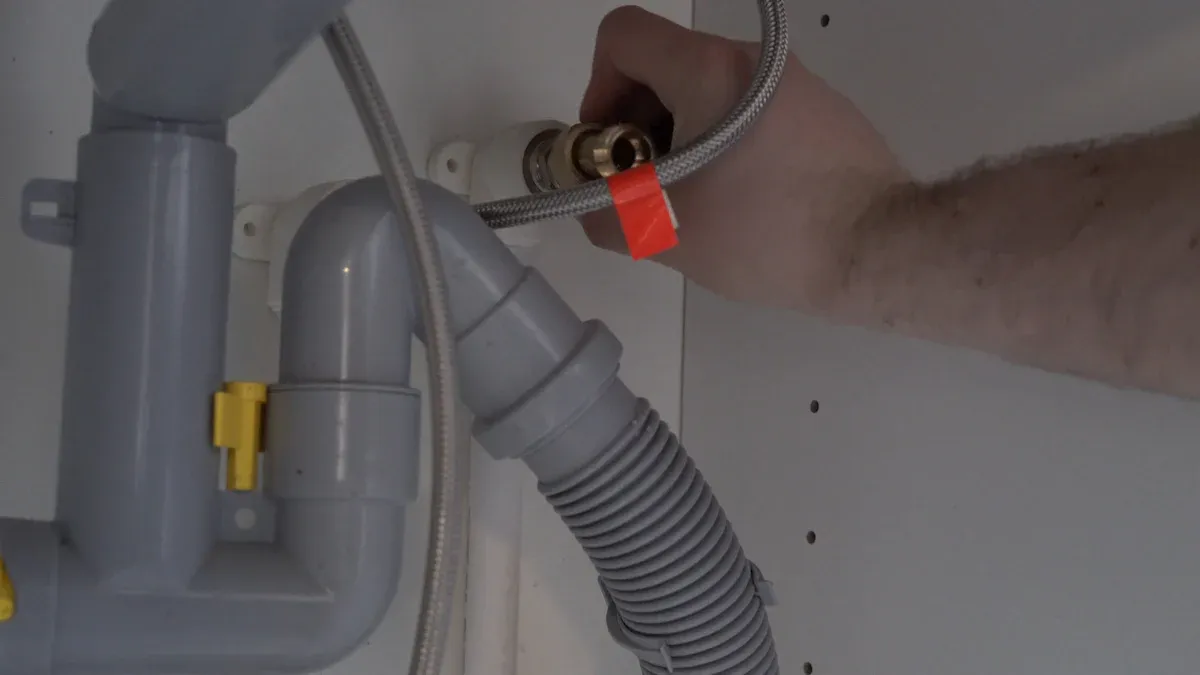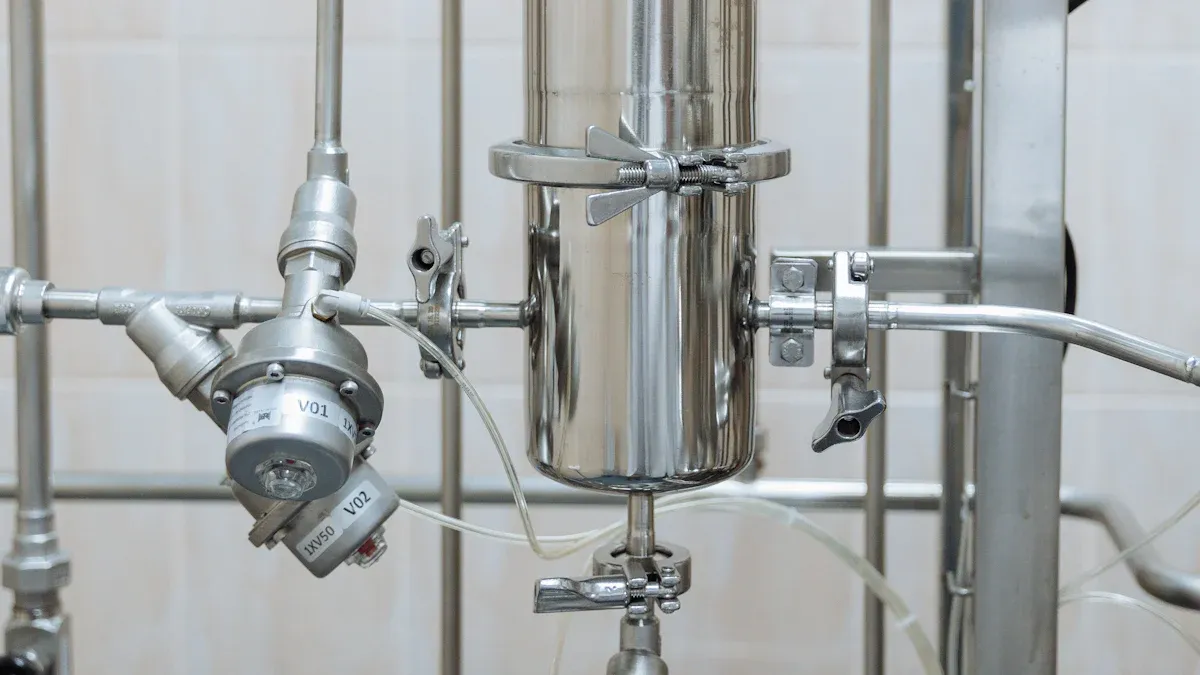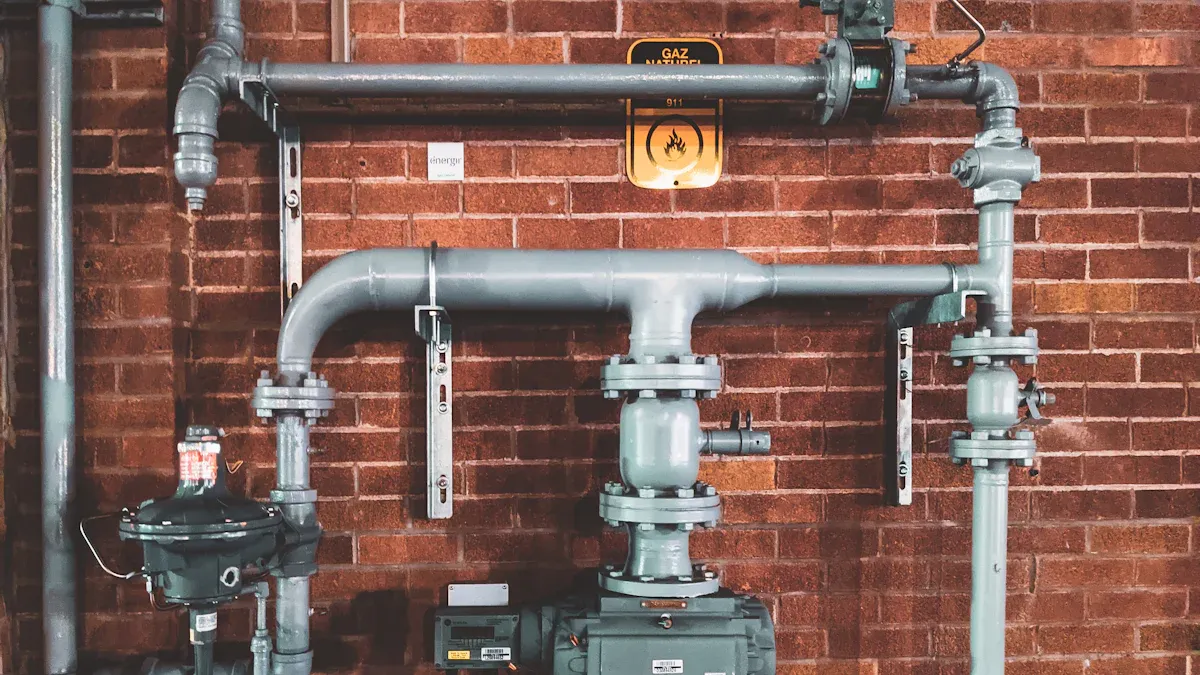
Water Heater Element tube breakage poses significant challenges in 2025. Homeowners encounter increased repair expenses and heightened safety risks. A damaged Shower Water Heater or a malfunctioning Heating Element For Water Heater can result in cold showers and costly water damage. Routine inspections of the Water Heater Heating Element and Hot Water Heating Element are essential to safeguard homes.
Key Takeaways
- Water heater element tubes break mainly due to overheating, corrosion from water quality, mineral buildup, and poor installation or maintenance.
- Broken tubes cause safety risks, higher energy bills, and costly water damage, so early signs like strange noises or leaks should not be ignored.
- Regular maintenance, choosing the right element material, and monitoring your water heater can extend its life and save money on repairs.
Why Water Heater Element Tubes Break

Excessive Watt Density and Overheating
High watt density in a Water Heater Element creates more heat than the tube can safely handle. This extra heat causes the element to overheat and sometimes burn out. When the element overheats, it can break down faster and stop working. Lower watt density helps the element last longer and keeps the water heater running smoothly.
Tip: Choosing a Water Heater Element with the right watt density can prevent early failure and save money on repairs.
Incorrect Sheath Material and Water Quality
The sheath covers the heating element and protects it from water. If the sheath material does not match the water quality, problems can happen. For example, hard water contains minerals that react with some metals. This reaction can cause corrosion and weaken the tube. Water with high levels of dissolved oxygen, chloride, or sulfur can also damage the sheath. Over time, these factors lead to cracks, holes, or even complete breakage.
- Corrosion-related problems are common causes of tube breakage.
- Internal oxidation and under-deposit corrosion weaken the tube.
- Chloride ions and dissolved oxygen create local spots where corrosion starts.
- Stress from water pressure and heat can make cracks worse.
Dry Firing and Moisture Intrusion
Dry firing happens when the Water Heater Element turns on without enough water around it. The element gets very hot very quickly. This sudden heat can damage the tube and cause it to crack or break. Moisture intrusion, such as water leaking into electrical parts, can also harm the element. Both problems reduce the life of the water heater and may create safety risks.
Limescale, Sediment, and Mineral Buildup
Mineral deposits build up on heating elements, especially in areas with hard water. Limescale forms when minerals in the water stick to the hot surface of the element. Sediment settles at the bottom of the tank and can cover the element. These buildups make the element work harder and less efficiently. Over time, the extra stress can cause the tube to fail.
- Limescale coats the element and can cause it to overheat.
- Sediment buildup can lead to cracks in the tank and damage the element.
- Mineral deposits lower performance and may cause complete failure.
- Signs of buildup include strange noises, rusty water, and heating problems.
Note: Regular maintenance, such as flushing the tank and using water softeners, helps prevent mineral buildup and protects the Water Heater Element.
Improper Installation and Maintenance
Incorrect installation or poor maintenance can lead to early tube breakage. If the element is not installed tightly or wiring is faulty, it may not work properly. Skipping regular maintenance, like flushing the tank, allows sediment and minerals to build up. Electrical issues, such as power surges, can also damage the element. Following the manufacturer’s instructions and checking the system often helps keep the water heater in good shape.
- Sediment and mineral buildup from lack of maintenance cause damage.
- Not flushing the tank lets sediment collect and harm the element.
- Hard water increases the risk of mineral scaling.
- Electrical problems can shorten the life of the element.
Consequences of Water Heater Element Tube Failure

Safety Hazards and Electrical Risks
A broken water heater element tube can create serious safety hazards. When the tube fails, water may come into contact with electrical parts. This can cause short circuits or even electric shocks. Sometimes, the water heater may trip the circuit breaker. In rare cases, fires can start if the wiring overheats. Families should always treat water and electricity as a dangerous mix.
Higher Energy Bills and Reduced Efficiency
A damaged Water Heater Element works harder to heat water. The system uses more electricity but produces less hot water. This leads to higher energy bills each month. The water heater may run longer, but showers still feel cold. Over time, the extra strain can shorten the life of the entire unit.
Tip: Watch for signs like slow heating or frequent breaker trips. These may signal a failing element.
Water Leaks and Home Damage
Water leaks from a failed element tube can cause expensive damage. Small leaks may only need a quick repair, but large leaks can ruin floors and walls. The table below shows typical repair costs:
| Repair Aspect | Description | Cost Range / Recommendation |
|---|---|---|
| Heating Element Replacement | Repair of failed heating element | $200 – $300 |
| Minor Leak Repair | Tightening or replacing valves | Around $150 |
| Major Leak / Tank Replacement | Full tank replacement due to leaks | Up to $5,000 |
| Replacement Recommendation | If unit leaks or is over 10 years old | Replace rather than repair |
Homeowners should act quickly to stop leaks and prevent further damage.
How to Extend Water Heater Element Service Life
Choose the Right Element and Sheath Material
Selecting the correct element and sheath material plays a major role in how long a water heater lasts. Different materials react differently to water quality. Stainless steel elements resist corrosion better than copper, especially in hard or corrosive water. Ceramic elements, with protective coatings, last longer in tough conditions. Porcelain or glass-lined casings help prevent rust and mineral buildup. Some elements even have self-cleaning features that reduce scale.
The table below shows how these factors affect the expected lifespan of water heater elements:
| Factor | Explanation | Impact on Lifespan |
|---|---|---|
| Element Material | Copper heats quickly but corrodes faster in mineral-rich or acidic water. Ceramic resists corrosion better. | Ceramic lasts longer in hard water. |
| Sheath Material & Coatings | Porcelain or glass-lined casings protect against rust and scale. Self-cleaning features help. | Coatings extend element life. |
| Water Quality | Hard water causes mineral buildup. Acidic water speeds up corrosion. | Poor water shortens lifespan. |
| Wattage, Voltage, and Size | Matching specs to the heater prevents damage and ensures efficient heating. | Correct match avoids early failure. |
| Maintenance | Flushing, anode rod checks, and water quality monitoring help maintain condition. | Good care prolongs lifespan. |
| Warranty and Manufacturer | Longer warranties and reputable brands show higher quality. | Longer warranty often means longer life. |
Manufacturers recommend using the same material when replacing elements. Stainless steel elements work well in harsh water conditions and resist dry firing. Major brands suggest using original equipment manufacturer (OEM) parts for the best fit and durability.
Tip: In areas with hard or corrosive water, stainless steel or ceramic elements provide better protection and longer service.
Regular Maintenance and Tank Flushing
Regular maintenance keeps a water heater running efficiently and prevents tube breakage. Flushing the tank removes sediment and mineral buildup that can cause overheating and damage. Most experts recommend flushing the tank at least once a year. In places with hard water, monthly or bi-monthly flushing may be needed.
Here are the most effective maintenance steps:
- Drain and flush the tank to remove sediment.
- Inspect and replace the anode rod to prevent corrosion.
- Test thermostats and valves for proper temperature control.
- Tighten electrical connections to avoid faults.
- Check insulation to keep heat in and reduce stress on parts.
The anode rod attracts corrosive elements in the water. Replacing it when worn out protects the tank and heating element from rust and corrosion. Following the manufacturer’s guidelines helps keep the warranty valid and ensures the best care.
Note: Regular flushing and anode rod checks help prevent costly repairs and extend the life of the Water Heater Element.
Monitor Usage and Address Issues Early
Monitoring water heater usage helps catch problems before they cause major damage. Early warning signs include fluctuating water temperatures, strange noises, and higher energy bills. Silt or mineral buildup can insulate the element, making it less effective. Malfunctioning thermostats or damaged dip tubes can also signal trouble.
A simple checklist can help:
- Listen for popping or rumbling sounds from the tank.
- Watch for inconsistent hot water or slow heating.
- Check for frequent circuit breaker trips.
- Look for signs of leaks or rust around the heater.
Annual inspections and routine checks allow homeowners to spot sediment buildup or electrical issues early. Replacing faulty elements or cleaning them when needed prevents complete failure. Monitoring water quality, especially in hard water areas, reduces mineral buildup and extends the life of the heater.
Alert: Addressing small issues right away prevents bigger problems and keeps the water heater working safely.
Proactive care helps families avoid costly repairs and disruptions in 2025. Simple steps make a big difference:
- Planned replacements prevent emergency expenses.
- Annual inspections catch problems early.
- Tracking heater age allows timely action.
- Drip pans with drainage protect homes from leaks.
These actions keep hot water reliable and homes safe.
FAQ
What signs show a water heater element tube might break soon?
Strange noises, slow heating, or rusty water often mean trouble. Homeowners should check for leaks or frequent circuit breaker trips as early warning signs.
How often should someone flush a water heater tank?
Experts recommend flushing the tank once a year. In areas with hard water, people may need to flush it every few months for best results.
Can a homeowner replace a water heater element tube alone?
A skilled homeowner can replace the element with the right tools. For safety, many choose to call a licensed professional for installation.
Post time: Jul-16-2025




